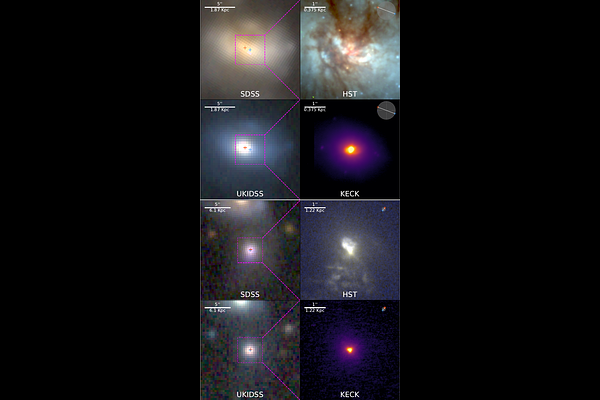A High Resolution Search for Dual AGNs in Mergers: Pushing the Frontier with Keck AO

A High Resolution Search for Dual AGNs in Mergers: Pushing the Frontier with Keck AO
Camilo Vazquez, S. Satyapal, G. Canalizo, N. J. Secrest, R. W. Pfeifle, T. Bohn, K. Nyland, A. Aravindan, L. Blecha, J. M. Cann, S. Doan, E. K. Hicks, P. Kurczynski, S. Juneau, M. Malkan, M. McDonald, J. McKaig, P. Nair, B. Rothberg, E. Schwartzman, F. Muller-Sanchez, R. Sexton, V. U
AbstractAccreting supermassive black holes (SMBHs) in galaxy mergers with separations $<$ 1kpc are crucial to our understanding of SMBH growth, galaxy evolution, and the evolution of SMBH binaries. Despite their importance, there are less than a handful known, and most have been discovered serendipitously. In this work, we employ a new selection method to systematically pre-select candidate advanced mergers likely to contain unresolved substructure at sub-arcsecond scales. By exploiting the large survey area and astrometric precision of the Wide-field Infrared Survey Explorer (WISE) and the Sloan Digital Sky Survey (SDSS), we have identified a sample of 48 nearby advanced mergers that have red WISE colors ($W_1-W_2>0.5$) indicative of accretion activity and significant sub-arcsecond offsets between their optical and infrared coordinates as measured by SDSS and WISE. We conducted high resolution adaptive optics (AO) observations of this sample with the Keck NIRC2 camera in the $K_p$ band ($2.124 ~ \mu m$, $\Delta\lambda = 0.351 \mu m$) to search for evidence of previously unresolved substructure suggested by the optical-to-infared offsets. We find that a significant fraction (20/48 or 42%) of the sample shows substructure tracing the SDSS/WISE offset and unresolved by SDSS, demonstrating that our methodology is a promising pathway to find dual AGN in follow-up spectroscopy. Archival optical Hubble Space Telescope (HST) imaging reveals that substructure identified with Keck is often missed in the optical or erroneously identified due to partial obscuration, underscoring the importance of carrying out studies of late-stage mergers in the infrared.